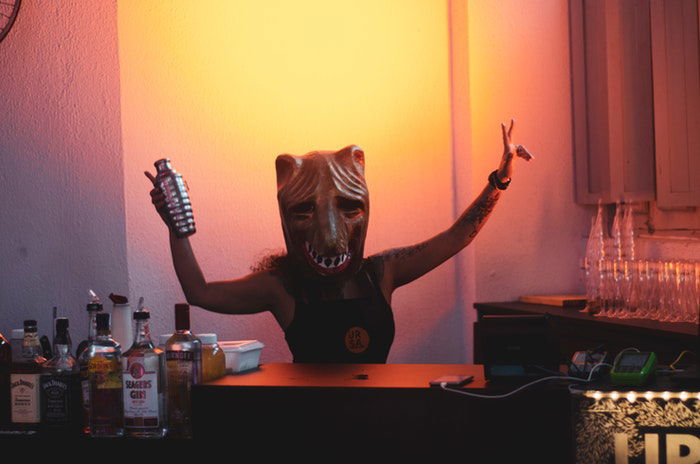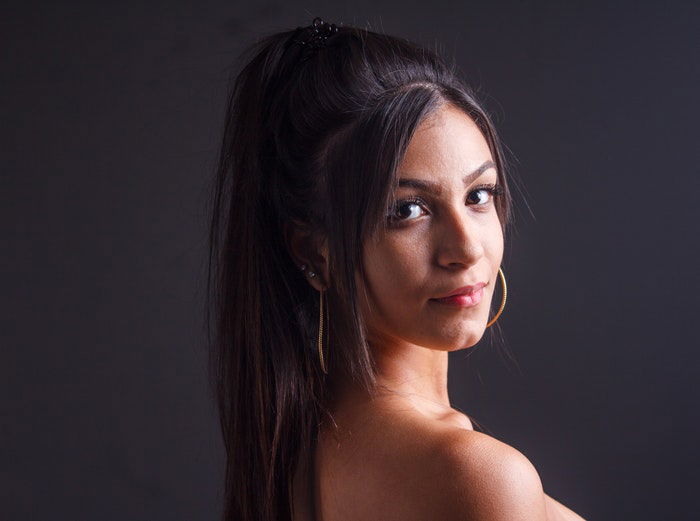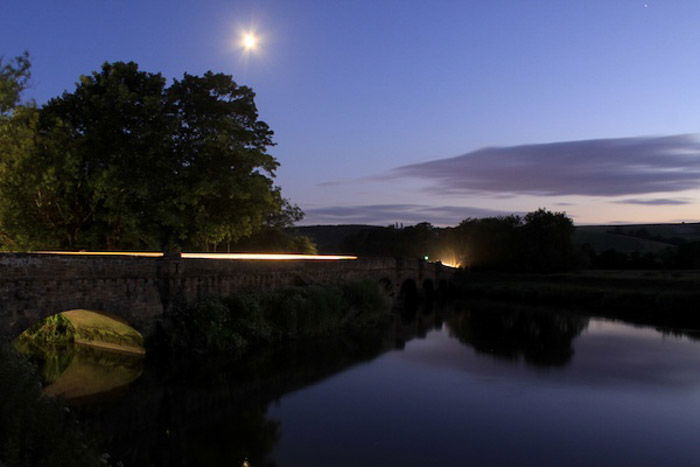Portrait Lighting Terms – a List of Photography Terms
When it comes to portrait photography, the lighting can make or break the shot. In order to get the perfect light for your portraits, you need to understand the different types of portrait lighting terms. This guide will teach you everything you need to know about portrait lighting, from modifiers to angles. With this knowledge, you’ll be able to create stunning portraits that look natural and beautiful.
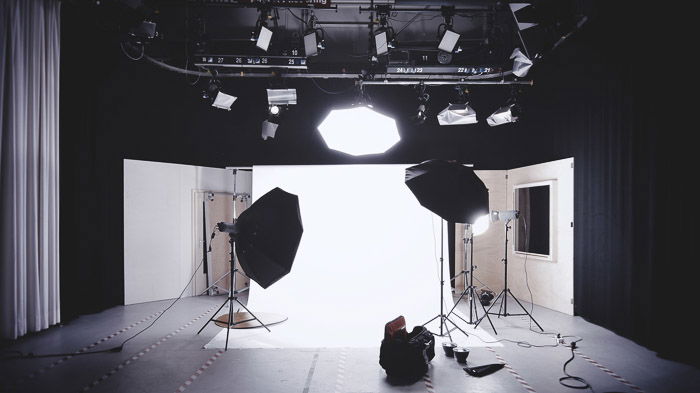
Back Light – Lighting that strikes a subject from behind relative to the subject’s position to the camera; back lighting is used to make a subject stand out against the background and is the third light source in a classic three-point lighting setup.
Blue Hour – In natural light photography, the period of the day when the sun is deep below the horizon so that the ambient sunlight creates a cool blue cast in the sky. The blue hour occurs during the twilight before dawn and after dusk. The time and duration of the blue hour varies depending on latitude and time of year.
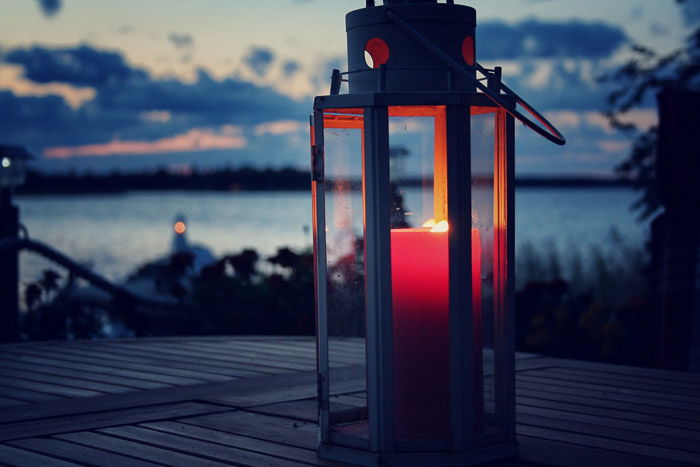
Bounce Light – Any light that is reflected or 'bounced off' other objects in a scene before reaching the subject. A bounce light is used to simulate the way light is reflected in the 'real world'
Broad Lighting – A portrait lighting pattern in which the subject is positioned with his or her face turned slightly from the camera and the key light is positioned to throw light onto the side of the face that is most visible to the lens (ie., the 'broad' side of the face)
Butterfly Lighting – A portrait lighting pattern in which light is cast from near to and above the camera that casts a butterfly-shaped shadow beneath the nose of the subject on their top lip.
Catchlight – A bright reflection in the eyes of the subject in a portrait.
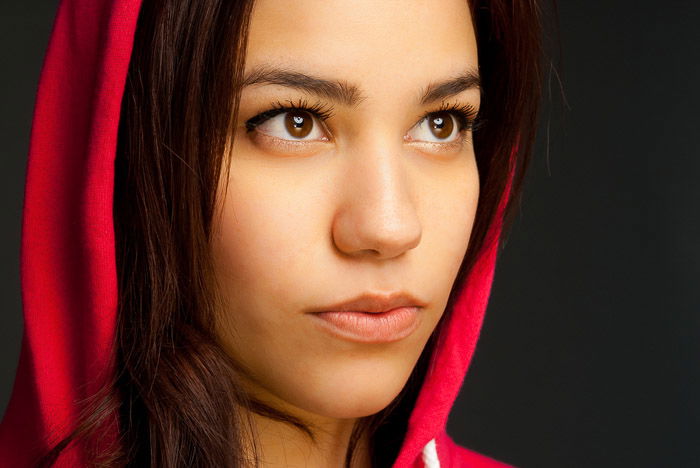
Catchlights
Continuous Lighting – Lighting that is on all the time (as opposed to strobe lighting); Continuous lighting enables you to see the subject lit exactly as you will photograph him/her.
Diffuser – A piece of cloth, netting, or translucent material used over light source to spread light over a wider area to soften shadows.
Directional Light – A light source that is located infinitely far away and throws equal amounts of light in all directions. The sun is a good example of a directional light. The light comes from a specific point but is equally emitted in all directions.
- Note that directional light is NOT the same as direct light, which is simply light that directly hits the subject and surfaces in a scene.
Effects Light – A small light—neither the key light nor fill light—used to illuminate a small portion of the subject, often a mini spotlight.
Fill Light – Light from a reflector of a separate lamp or flash head used to illuminate the shadows cast by key (main) light and so reduce the lighting ratio.
Gel – Short for 'gelatin filter', a gel is an optical filter placed in front of the camera or lights to adjust the viewing color of the scene.
Gobo – Short for 'go between', a gobo is a piece of perforated opaque material (card, metal, foamboard, etc.) used between light source and background to cast pattern in light.
Golden Hour – In natural light photography, the period of the day when the sun is near the horizon line when sunlight creates a golden hue in the sky. The golden hour occurs during the moments just after sunrise in the morning and just before sunset in the evening. The time and duration of the golden hour varies depending on latitude and time of year.
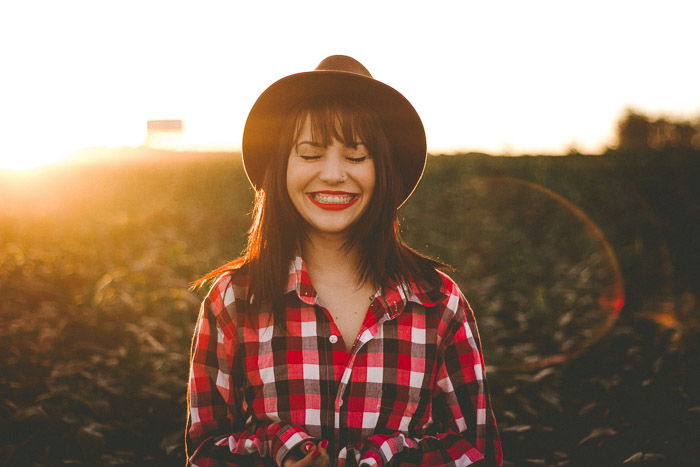
Golden hour
Guide Number – A number used to describe the maximum coverage distance of a flash unit for a given lens aperture and film speed/sensitivity.
Hair Light – Technically a back light, a hair light is a light source positioned to illuminate the rim of the subject’s hair in order to separate the subject from the background.
Halo Lighting – A portrait lighting pattern which uses a strong light directly behind the sitter’s head which creates a halo of light through the hair and makes the subject stand out dramatically from the background. The light is placed behind the sitter so it cannot be seen from the camera position.
Key Light – The primary light source illuminating a scene. It is used in conjunction with fill light, back light, and bounce light to light an environment. For outdoor shots, the sun is generally the key light.
High Key – A lighting style where the lighting ratio is small (ie. close to 1:1). High-key lighting is typically bright shows little contrast between light and shadow.
Light Plan – A diagram that illustrates the positioning of the lights used
Light Modifier – Anything that modifies the light from a lamp or head. Also called a 'light shaper'.
Lighting Ratio – comparison of two light intensities sometimes expressed in stops. May be described as the key-to-fill ratio; the combined intensity of the key and fill lights compared to the key light alone.
Loop Lighting – A portrait lighting pattern in which the key light is set to throw a news shadow that follows the lower curve of the cheek opposite the light. The shadow form the key light covers the unlit side of the nose without extending onto the cheek.
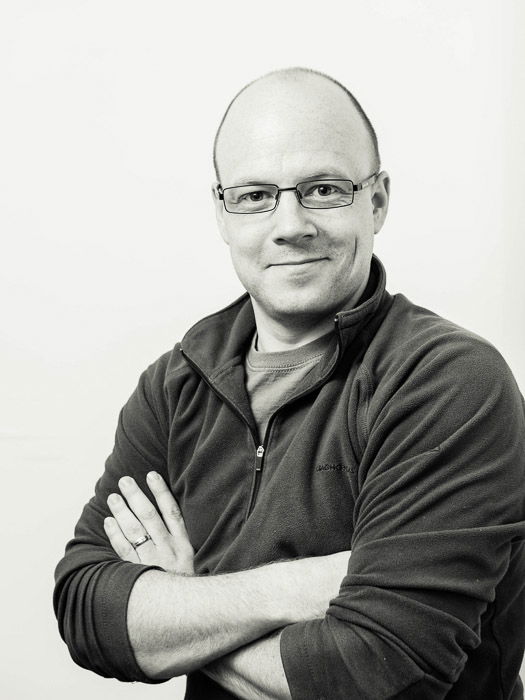
Loop lighting
Low Key – A lighting style where the lighting ratio is great (ie. generally 4:1 and up). Low-key lighting typically shows great contrast between light and shadow and reveals more texture and structure in the subject.
Reflector – Object that reflects much of the light that falls on it. Usually white, silvered, or gold colored.
Rembrandt Lighting – A portrait lighting pattern that uses light from a single source, as seen in the paintings of Dutch painter Rembrandt van Rijn. With Rembrandt lighting, the narrow side of the face (the side of the face turned away from the camera) is lit. The light is concentrated in a smaller area and emphasises the outline of the side of the face against the background. It is a highly dramatic lighting style.
Rim Light – Another name for the back light (see above); so named because it is light that comes round the edge (or rim) of a subject from a source behind or to the side.
Ring Flash – Either a circular flash tube or a circle of segmented flash tubes that fit around the lens. It leaves a tell-tale circular catchlight in the model’s eyes.
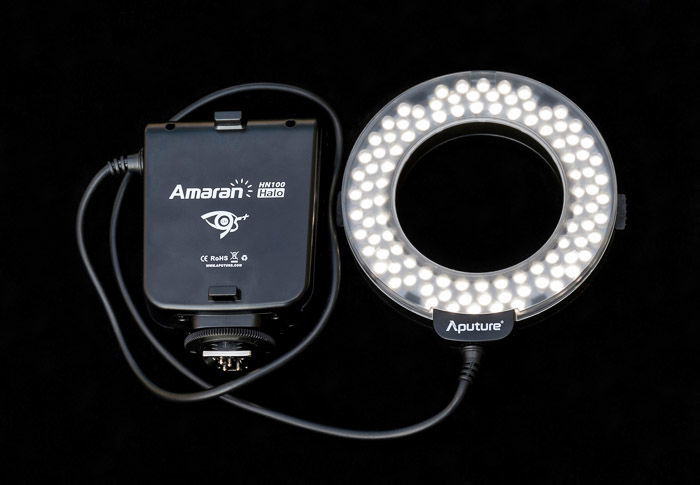
Ring flash
Short Lighting – A portrait lighting pattern in which the subject is positioned with his or her face turned slightly from the camera and the key light is positioned to throw light onto the side of the face turned away from the camera (ie., the 'short' side of the face).
Softbox – A type of light shaper that consists of a box or frame covered with translucent (light diffusing) material used over a flash head to create a soft light, available in various sizes.
Spill – Extra light that 'overshoots' the subject. It can be used on a background or reflected back on to the subject but may produce lens flare and needs to be controlled with barn doors on the lamp or flash head, flags or gobos.
Split Lighting – A portrait lighting pattern that splits the face down the centreline of the nose into a lit side and a dark side.
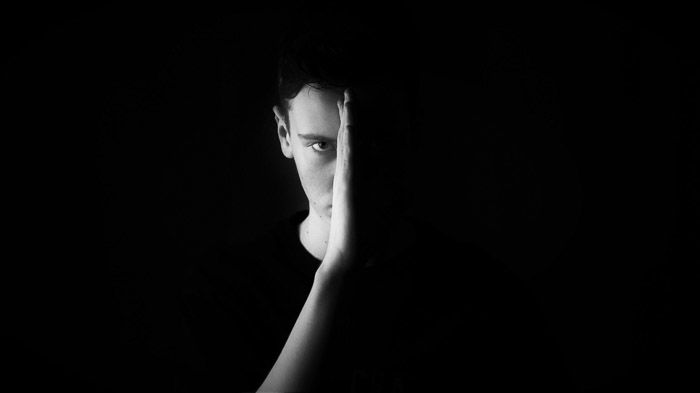
Extreme split lighting
Strip Box – A type of softbox with a strip or grid pattern on its diffusing material. Strip boxes are typically narrower than softboxes.
Strobe lighting – A light source that temporarily casts light onto the subject. This type of light is commonly referred to as a 'flash'.
Three-point lighting – A standard lighting setup which uses three light sources: the key light, the fill light, and the hair light.
Tri-flector – Folding reflector with three surfaces much used in portraiture.
Umbrella – A type of light modifier; essentially an umbrella whose materials and form have been modified for use in studio photography.


